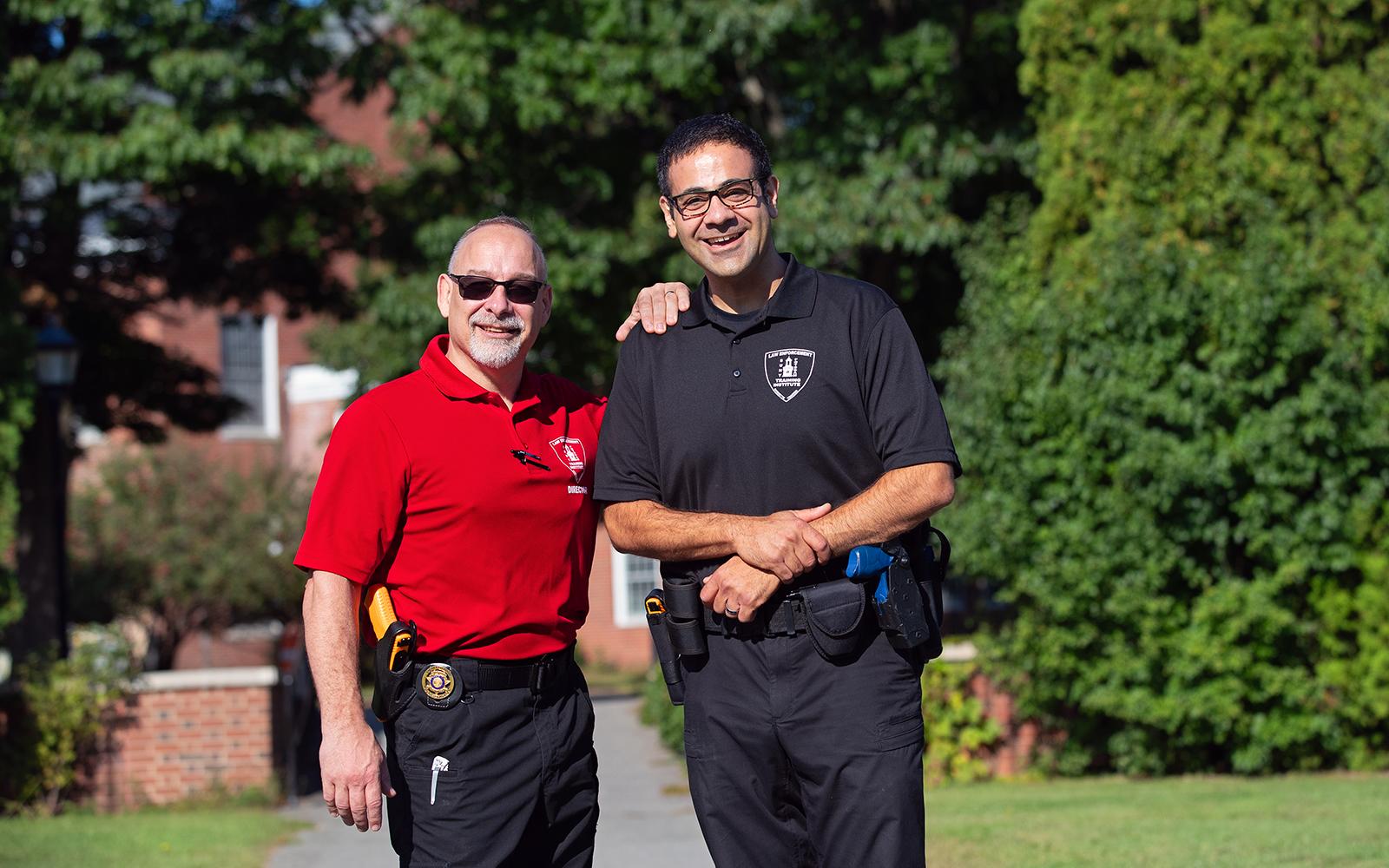Dr. Glick intends to be there for officer-involved situations
Dr. Scott Glick is a Geneva, N.Y. emergency room physician who remade his life—and his body—to better serve his community.
Dr. Glick, who works in the emergency department at FF Thompson Hospital in Canandaigua, has entered SUNY Potsdam’s Law Enforcement Training Institute so he can work part time as an Ontario County deputy sheriff, providing critical medical care at the precise time and point where SWAT team members and other officers enter life-threatening situations.
Dr. Glick shed 100 pounds and strategized for three years to find the time away from his emergency medical duties to complete the five-month police academy at SUNY Potsdam.
“I’m happy with my medical career, but this is something I have always wanted to do,” he said.
The mix of medicine and law enforcement is hard to find. While more tactical teams are beginning to incorporate medical components into their response frameworks, traditional models have kept a wide separation between highly-trained officers who put their lives directly on the line and the medical personnel who follow to care for the injured after the scene is deemed safe. And having a physician working directly as a sworn officer is rare.
“I can tell you that when I was on the county’s SWAT team, I would have loved to have had a doctor just seconds behind me. This is a terrific idea for everyone.”
Director of Potsdam’s Law Enforcement Training Institute, who is training Glick in de-escalation and tactical skills

Albert “Sonny” Duquette, left, poses for a portrait with Dr. Glick
Dr. Glick is the medical director for more than 30 EMS, fire, and police agencies in the Finger Lakes region, and serves as one of the three directors for the regional emergency medical advisory committee (REMAC) for the Finger Lakes region, overseeing coordination and the quality of EMS in the region. On any given day, he might be seen in his response vehicle, rendering aid out in the communities.
While his career focus ultimately led him to emergency medicine, an interest in law enforcement persisted from childhood. Dr. Glick discussed his new goal for months with his wife, who reminded him he needed to drop weight if he was to be at his most effective for building bridges between officers, medicine, and a public that is often polarized in its regard for police work.
Doctors embedded in SWAT teams can provide critical care when seconds count, the physician said. Beyond this value, he believes there is an equation between a doctor’s needed skill to communicate well with patients under extreme stress, and an officer’s same need to be a skilled communicator in high-stress situations.
“The goals of tactical interventions by law enforcement are often misunderstood,” he said. “Many people believe that tactical law enforcement is there to take life, when the opposite is true—they are there to preserve life by any means possible. In all tactical encounters—even if the swat team needs to intervene and use force—having EMS present to care for civilians, suspects, and law enforcement the same, is a high priority. By having EMS on the team, care begins before traditional EMS would be able to safely enter the scene.”
Article Bret Yager, photos by Jason Hunter
